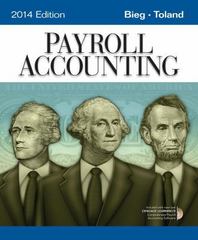- Illustrate hypothetical calculations that would be done to help creditors understand how much money they might receive if the company
- were to liquidate. Ensure all information is entered accurately. Please refer to the illustration (Exhibit 13.2) on page 592 from your textbook to view potential calculations.
o The land and building are in an excellent location and can be sold for a figure 10 percent above book value. However, the equipment was specially designed for Chaplin. Company officials anticipate having trouble finding a buyer for this equipment unless the price is reduced considerably. Unless they have exceptionally good luck, they expect to receive only 40 percent of current book value for these assets. 0 Administrative costs of $21,500 are projected if the company does liquidate. o Accrued expenses are listed on the balance sheet as $18,000. That amount includes salaries of $14,000. This figure includes one person who is owed $13,475 but is the only employee due an amount above $12,475. Other accrued expenses total $4,000. In addition, payroll taxes of $2,000 have been withheld from employee wages but not yet paid to the government or recorded as a liability. 0 Interest of $5,000 on the company's long-term liabilities has not yet been accrued for the first six months of 2014. From this information, the statement of financial affairs presented in Exhibit 13.2 for the Chaplin Company was prepared. Several aspects of this statement should be specifically noted: Available tor Boot: Unsecured Values Creditors Assets Pledged with fully secured creditors: $210,000 Land and bulking .................. 5231.000 Less: Notes payable (long term) ........ (200.000) hterest parable .................... M $26,000 Pledged with partially secured creeltors: 41.000 Inventory ......................... 5 45.000 Less: Notes payable (current) .......... (75.000) -0- Free assets 2.000 Cash ............................ 2.000 15.000 Investment In marketable securities ..... 20.000 -0- Dividends receivable ................. 500 23.000 Accounts receivable ................. 12.000 3.000 Prepaid expenses ................... 1.000 30,000 Equipment ........................ 32.000 1 5.000 htanglble assets ................... -0- Total avaiabie to pay liabilities with priority and unsecured creditors ....... 93,500 Less: Liablitles with priority (see below It Liabilities) .......... (36500) Available for unsecured creditors ....... 57,000 Estimated deficiency ................ 38'000 (D $389,000 595:000 Unsecured- Book Nonprlotlty Values Liabilities liabilities and Stockholders Equity Liabilities with priority: 5 -0- Amllnistlatlve expenses (esthlated) ..... 5 21,500 14,000 Salaries payable (accrued expenses) ..... 13,000 5 1.000 -0- Payroiltabespayaaie(accruedexperses).... 2.000 Total ............................ 5 36.500 Fully secured creditor: 200.000 Notes payable ..................... S 200,000 -0- Interest payable .................... 5.000 Less: Land and building ............... (231,000) -0- Partlaly secured creators: 75.000 Notes payable ..................... 5 75,000 Less: Inventory ..................... (45.000) 30.000 Unsecured creditors: 60,000 Accounts payable ................... 60.000 4,000 Accrued expenses (other than salaries and payroll taxes) .................. 4.000 36.000 Stoddlolders' equity ................. -0- 53394 $95,000 EXHIBIT 13.2 1. The current and noncurrent distinctions usually applied to assets and liabilities are omitted from this financial statement. Because the company is on the verge of going out of business, such classifications are meaningless. Instead, the statement is designed to separate secured from unsecured balances. 2. Book values are included on the left side of the schedule but only for informational purposes. These figures are not relevant in a bankruptcy. All assets are reported at estimated net realizable value, whereas liabilities are shown at the amount required for settlement. 3. Both the dividend receivable and the interest payable are included in Exhibit 13.2, although neither has been recorded to date by the company on its balance sheet. The payroll tax liability also is reported at the amount the company presently owes. The statement of financial affairs is designed to disclose currently updated figures. 4. Liabilities having priority are individually identified within the liability section (Point A). Because these claims will be paid before other unsecured creditors, the $36,500 total is subtracted directly from the free assets (Point B). Although not yet incurred, estimated administrative costs are included in this category because such expenses will be necessary for a liquidation. Salaries are also considered priority liabilities. However, the $1,000 owed to one employee in excess of the individual $12,475 limit is separated and shown as an unsecured claim (Point O). 5. According to this statement, if liquidation occurs, Chaplin expects to have $57,000 in free assets remaining after settling all liabilities with priority (Point D). Unfortunately, the liability section shows unsecured claims of $95,000. These creditors, therefore, face a $38,000 loss ($95,000 $57,000) if the company is liquidated (Point E). This final distribution is often stated as a percentage: Free assets _ $57,000 _ 60%. Unsecured claims $95,000 Unsecured creditors can anticipate receiving 60 percent of their claims. An individual, for example, to whom this company owes an unsecured balance of $400 should anticipate collecting only $240 ($400 x 60%) following liquidation. However, this is merely an estimation. 6. If the statement of financial affairs had shown the company with more free assets (after subtracting liabilities with priority) than the total amount of unsecured claims, all of the creditors could expect to be paid in full with any excess money going to Chaplin's stockholders









